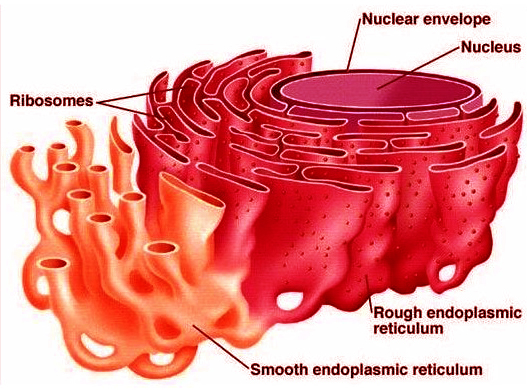For The Latest Medical News, Health News, Research News, COVID-19 News, Pharma News, Glaucoma News, Diabetes News, Herb News, Phytochemical News, Thailand Cannabis News, Cancer News, Doctor News, Thailand Hospital News, Oral Cancer News, Thailand Doctors
Medical News: Scientists at the University of California, San Diego, School of Biological Sciences have made groundbreaking discoveries about how SARS-CoV-2, the virus responsible for COVID-19, alters human cells. Their recent study reveals that the virus's NSP4 protein plays a critical role in changing the structure of the endoplasmic reticulum (ER), a vital component of human cells. The findings shed light on how the virus manipulates cells to replicate and could pave the way for new therapeutic strategies.

SARS-CoV-2 NSP4 Protein Alters Endoplasmic Reticulum Structure
What is the Endoplasmic Reticulum?
The endoplasmic reticulum is a complex, interconnected network of membranes in human cells, crucial for producing proteins, lipids, and calcium storage. It's often referred to as the cell's "factory," playing a role in maintaining cellular health and functionality. However, this essential structure becomes a target when SARS-CoV-2 invades a host.
When SARS-CoV-2 infects a cell, it hijacks the ER to create double-membrane vesicles (DMVs), specialized compartments where the virus replicates. This Medical News report delves into the role of the NSP4 protein in reshaping the ER, a process critical to the virus's survival.
Key Findings of the Study
The research team, led by Allison Kifer, Francisco Pina, Nicholas Codallos, Anita Herman, Lauren Ziegler, and Maho Niwa, used both yeast and human cells to study the impact of the NSP4 protein. Yeast cells, which have a simpler ER structure, served as a model to observe changes more easily, while human cells confirmed the relevance of these findings in a clinical context.
-NSP4 Induces ER Structural Changes
The study demonstrated that NSP4 alone is sufficient to cause significant changes in the ER structure. Researchers observed the formation of ER membrane foci and disruptions in the usual reticular structure of the ER. These changes are linked to the virus's ability to create DMVs, which protect its genetic material from cellular defenses and facilitate efficient replication.
-Activation of Stress Pathways
NSP4 expression was found to activate the unfolded protein response (UPR), a cellular stress pathway. This activation signals that the ER is overwhelmed and struggling to maintain its functions. Interestingly, NSP4 also triggered the ER Surveillance (ERSU) pathway, a lesser-known checkpoint that halts cell division under ER stress. This dual activation disrupts normal cell function and aids the virus in commandeering cellular machinery.
-ESCRT Proteins are Involved
The study highlighted that NSP4-induced changes are mediated by the endosomal sorting complex required for transport (ESCRT) proteins, specifically Vps4 and Vps24. These proteins are known for their role in membrane remodeling and are now identified as critical players in the virus's s
trategy to reshape the ER.
Implications for Human Cells
In human cells, NSP4 expression resulted in similar disruptions. The protein caused the ER to form small, circular foci and aggregates. These structural changes extended to other parts of the secretory pathway, such as the Golgi apparatus, and even caused nuclear deformities. This comprehensive impact highlights the protein's role in destabilizing cellular architecture.
Potential Therapeutic Targets
By identifying the specific proteins and pathways involved in NSP4's actions, researchers can explore new therapeutic avenues. For instance, targeting the interaction between NSP4 and ESCRT proteins could prevent the virus from replicating efficiently. Similarly, modulating the UPR or ERSU pathways might help restore normal cellular functions during infection.
Conclusion
This groundbreaking study provides vital insights into the molecular mechanisms SARS-CoV-2 uses to manipulate host cells. The NSP4 protein is a key player in altering ER structure, activating stress pathways, and facilitating the virus's replication. These findings underscore the complexity of viral infections and the need for targeted therapeutic interventions.
The study findings were published on a preprint server and are currently being peer reviewed.
https://www.biorxiv.org/content/10.1101/2024.12.08.627411v1
For the latest COVID-19 News, keep on logging to Thailand Medical News.
Read Also:
https://www.thailandmedical.news/news/new-insights-into-reticulophagy-and-its-role-in-viral-infections
https://www.thailandmedical.news/news/the-interplay-between-sars-cov-2-and-the-endoplasmic-reticulum-and-the-resulting-covid-19-symptoms-and-long-covid-manifestations